Lime Microsystems
Software Defined Radio
Altera
Lime Microsystems
Software Defined Radio
Altera
LimeSDR is a low cost, open source, apps-enabled (more on that later) software defined radio (SDR) platform that can be used to support just about any type of wireless communication standard. LimeSDR can send and receive UMTS, LTE, GSM, LoRa, Bluetooth, Zigbee, RFID, and Digital Broadcasting, to name but a few.
While most SDRs have remained in the domain of RF and protocol experts, LimeSDR is usable by anyone familiar with the idea of an app store - it’s the first SDR to integrate with Snappy Ubuntu Core. This means you can easily download new LimeSDR apps from developers around the world. If you’re a developer yourself, you can share and/or sell your LimeSDR apps through Snappy Ubuntu Core as well.
The LimeSDR platform gives students, inventors, and developers an intelligent and flexible device for manipulating wireless signals, so they can learn, experiment, and develop with freedom from limited functionality and expensive proprietary devices.
Here are just some of the applications that are possible with the LimeSDR:
With state-of-the-art technical specs, fully open hardware and toolchain, and integration with Snappy Ubuntu Core’s app distribution platform, LimeSDR is limited only by our collective imagination.
| HackRF One | Ettus B200 | Ettus B210 | BladeRF x40 | RTL-SDR | LimeSDR | |
|---|---|---|---|---|---|---|
| Frequency Range | 1MHz-6GHz | 70MHz-6GHz | 70MHz-6GHz | 300MHz-3.8GHz | 22MHz-2.2GHz | 100kHz-3.8GHz |
| RF Bandwidth | 20MHz | 61.44MHz | 61.44MHz | 40MHz | 3.2MHz | 61.44MHz |
| Sample Depth | 8 bits | 12 bits | 12 bits | 12 bits | 8 bits | 12 bits |
| Sample Rate | 20MSPS | 61.44MSPS | 61.44MSPS | 40MSPS | 3.2MSPS | 61.44MSPS (Limited by USB 3.0 data rate) |
| Transmitter Channels | 1 | 1 | 2 | 1 | 0 | 2 |
| Receivers | 1 | 1 | 2 | 1 | 1 | 2 |
| Duplex | Half | Full | Full | Full | N/A | Full |
| Interface | USB 2.0 | USB 3.0 | USB 3.0 | USB 3.0 | USB 2.0 | USB 3.0 |
| Programmable Logic Gates | 64 macrocell CPLD | 75k | 100k | 40k (115k avail) | N/A | 40k |
| Chipset | MAX5864, MAX2837, RFFC5072 | AD9364 | AD9361 | LMS6002M | RTL2832U | LMS7002M |
| Open Source | Full | Schematic, Firmware | Schematic, Firmware | Schematic, Firmware | No | Full |
| Oscillator Precision | +/-20ppm | +/-2ppm | +/-2ppm | +/-1ppm | ? | +/-1ppm initial, +/-4ppm stable |
| Transmit Power | -10dBm+ (15dBm @ 2.4GHz) | 10dBm+ | 10dBm+ | 6dBm | N/A | 0 to 10dBm (depending on frequency) |
| Price | $299 | $686 | $1,119 | $420 ($650) | ~$10 | $299 ($289 pre-order) |
Over the last three years, we’ve worked on numerous open source projects, all made available through Myriad-RF. This is no different, open source is central to LimeSDR:
Like the move to open source software with general purpose computers, the programmable, fully open source LimeSDR represents a fundamental shift away from the traditionally single-function and heavily proprietary wireless domain.
We’ve put significant effort into ensuring that backers will have a first class out-of-box experience by providing support for a vast array of open source SDR ecosystem software. This is thanks to a host driver architecture that supports both the SoapySDR and UHD APIs. With this support, you can be up and running with many existing applications in no time at all. In addition to providing the streaming interface, the driver also supports advanced features such as timed TX bursts and RX sample timestamps, as required for use with GSM and other time-sensitive protocols.
LimeSDR and its toolchain have already been used to create a Wireless Multi-tool for IoT, including complete source code that demonstrates:
Of course, these examples don’t take advantage of the performance and high data rates available with LimeSDR, but they do demonstrate the basics.
The LimeSDR’s host driver is built on top of Lime Suite, a low level library that takes care of programming and calibration for the LMS7002M FPRF transceiver. Lime Suite also provides a GUI that lets you directly read and write to registers, update the Cypress FX3 USB 3.0 controller firmware and Altera Cyclone IV FPGA bitstream, and display FFT plots.
We used SoapySDR, the vendor/platform neutral SDR support library, to provide a C++ API with C wrapper and Python bindings. This architecture is modular and supports plugins, such as the UHD module, which lets LimeSDR use the UHDTM API, allowing access to a diverse array of existing SDR ecosystem software. The library also enables remote access support, which allows LimeSDR to be accessed transparently over the network by applications running on other hosts.
Rapid application development is further enhanced with the combination of Pothos dataflow programming software suite and GNU Radio. With an extensive collection of DSP and related blocks, together with GUI environments that allow all manner of applications — from Bluetooth and WiFi to RADAR and radio astronomy — this combo lets you rapidly and easily build an application stack.
The development environment is made even more accessible by the fact that the host driver, Lime Suite, and SoapySDR are all open source, as are Pothos and GNU Radio. The full Altium design database for LimeSDR, along with the USB controller firmware and FPGA RTL is also open source, meaning that if you need to implement some new firmware or FPGA feature, you can — in fact, you’re even free to make your own variant of the LimeSDR hardware and use elements of it in your own designs. In addition, a KiCAD recapture and layout is planned.
If you have a question about ordering, paying, or shipping, please refer to The Crowd Supply Guide.
If you have a technical question about the operation of the LimeSDR or any of its applications, please ask your question on the Myriad-RF forum.
Produced by Lime Microsystems in Guildford, England.
Sold and shipped by Crowd Supply.
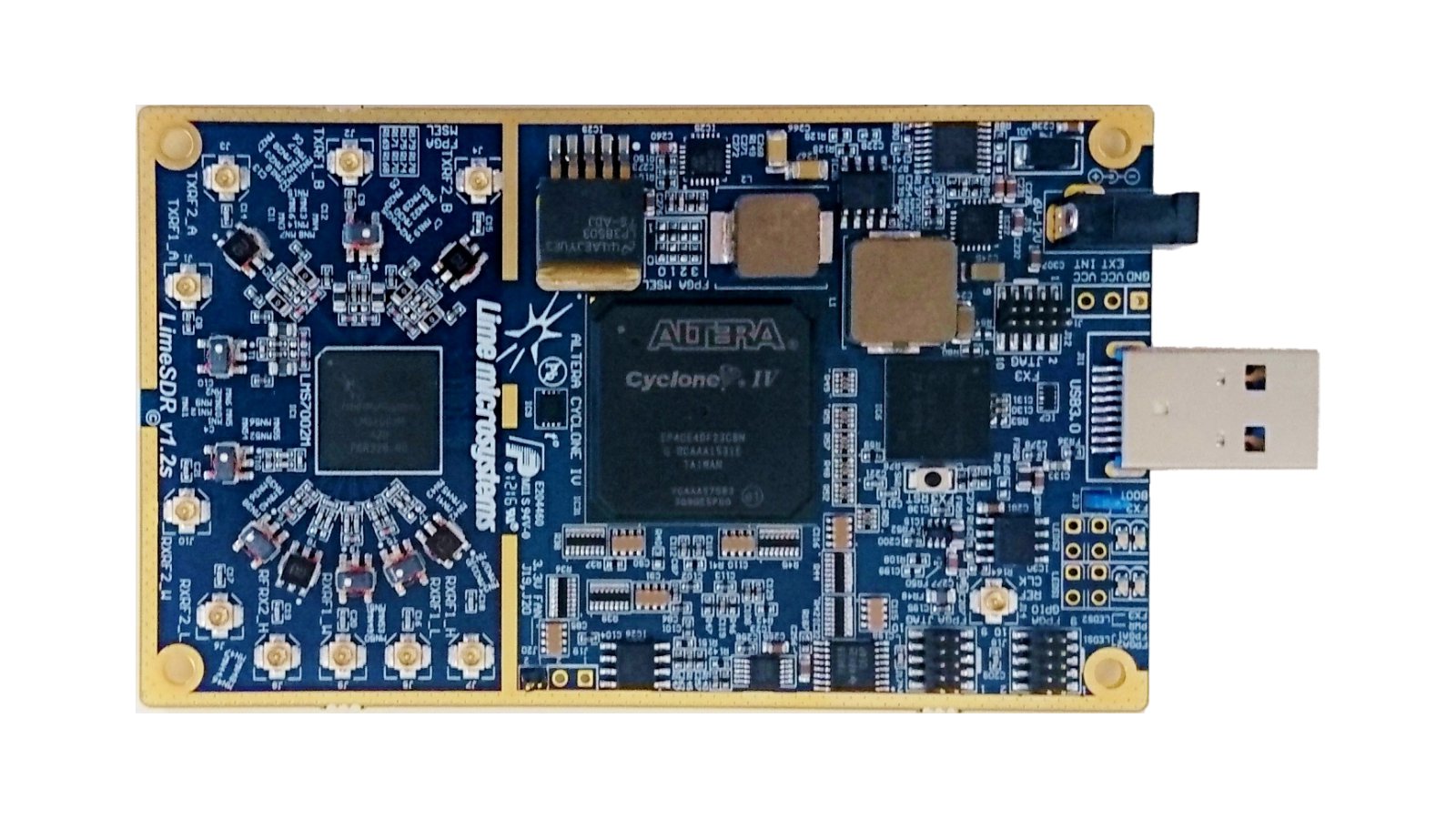
The LimeSDR is based on Lime Microsystem’s latest generation of field programmable RF transceiver technology, combined with FPGA and microcontroller chipsets. These connect to a computer via USB 3 with a Type-A connector. LimeSDR then delivers the wireless data and the CPU provides the computing power required to process the incoming signals, and to generate the data to be transmitted by the LimeSDR to all other devices.
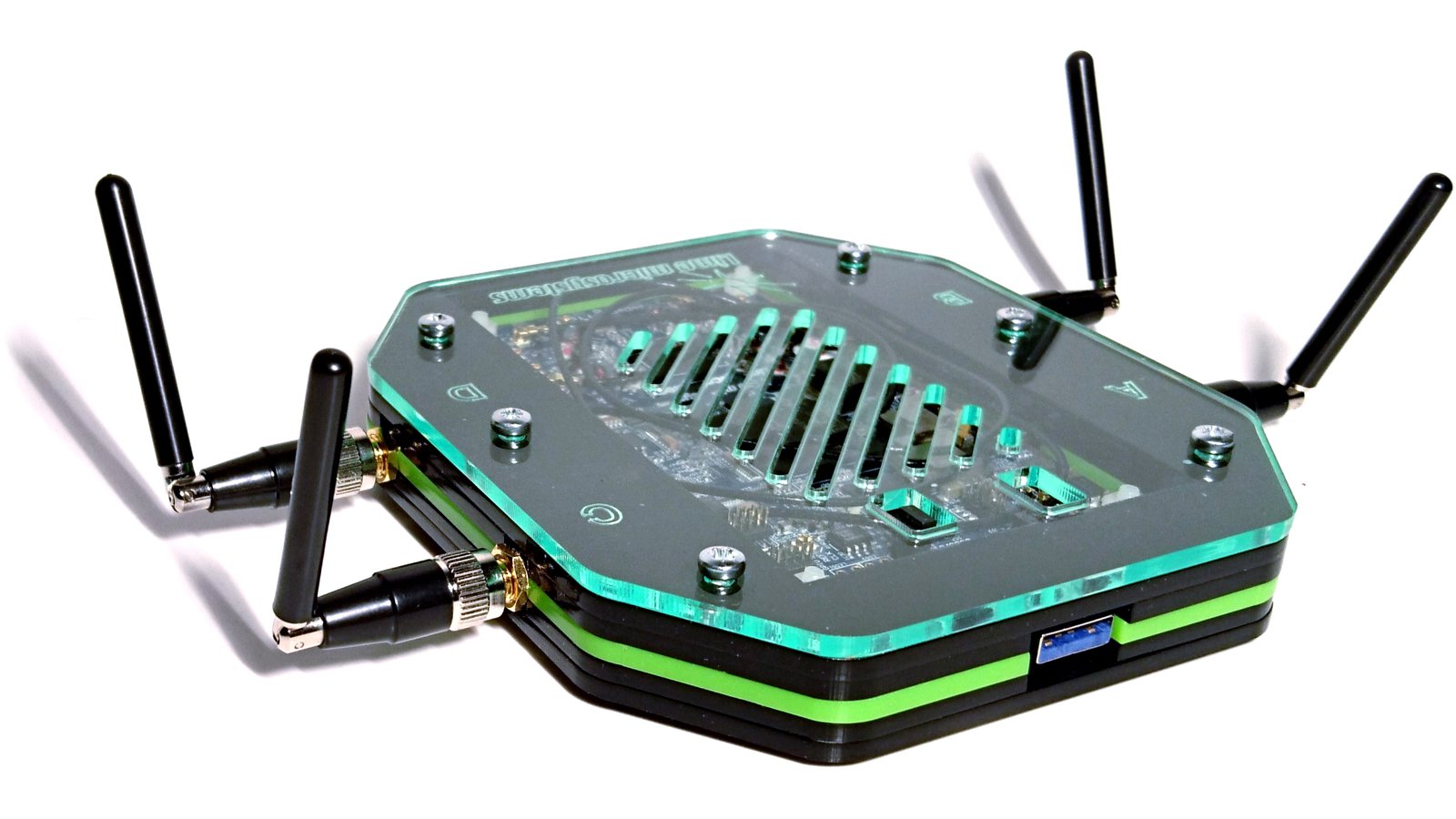
A layered acrylic case to protect your LimeSDR. Antenna not included - separate purchase available.
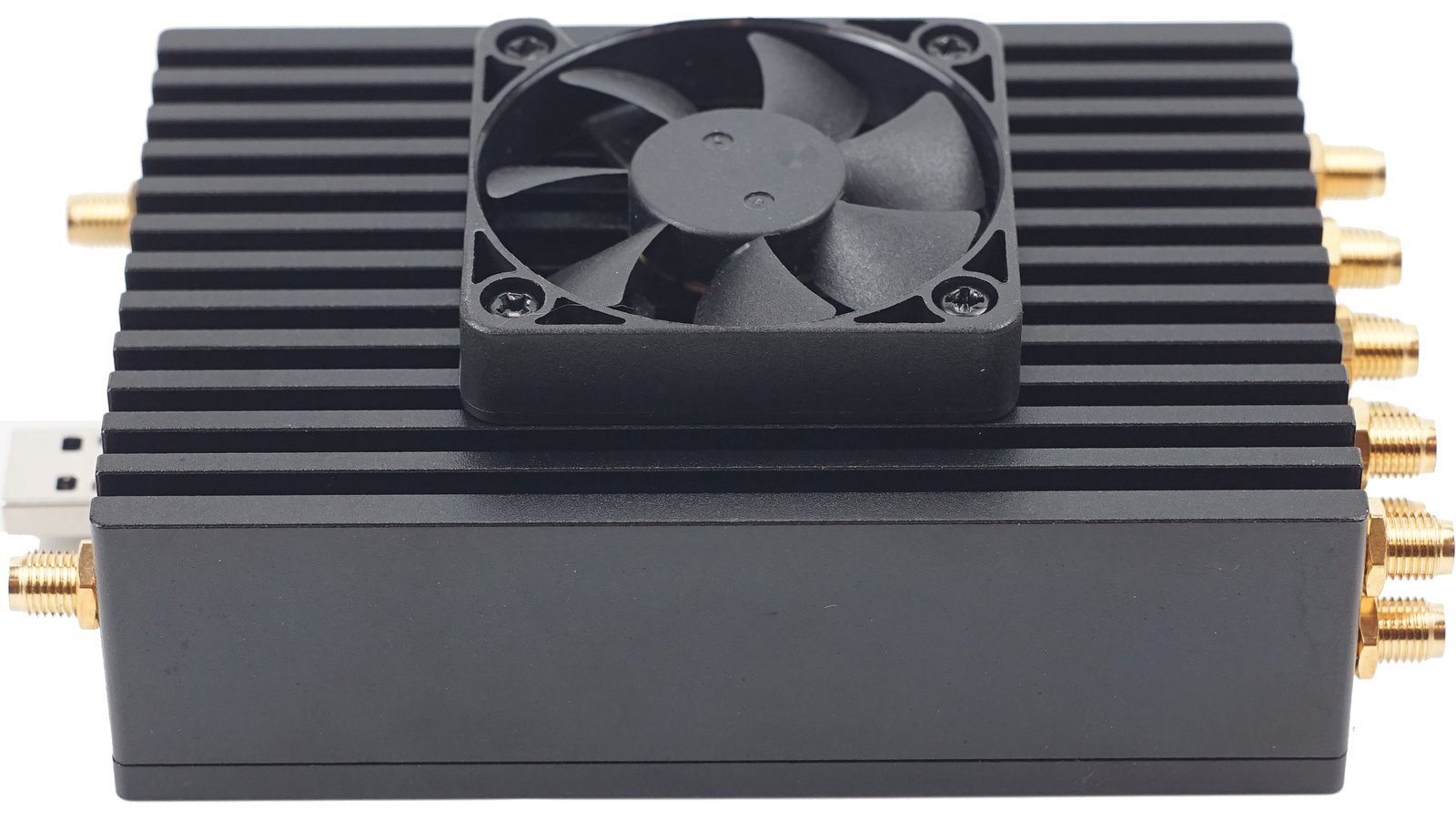
From the Lime AC Case project.
An aluminum case for LimeSDR USB Type-A, with one fan and 12 U.FL-to-SMA cables. This case allows for all on-board RF and CLK lines to be externally available.
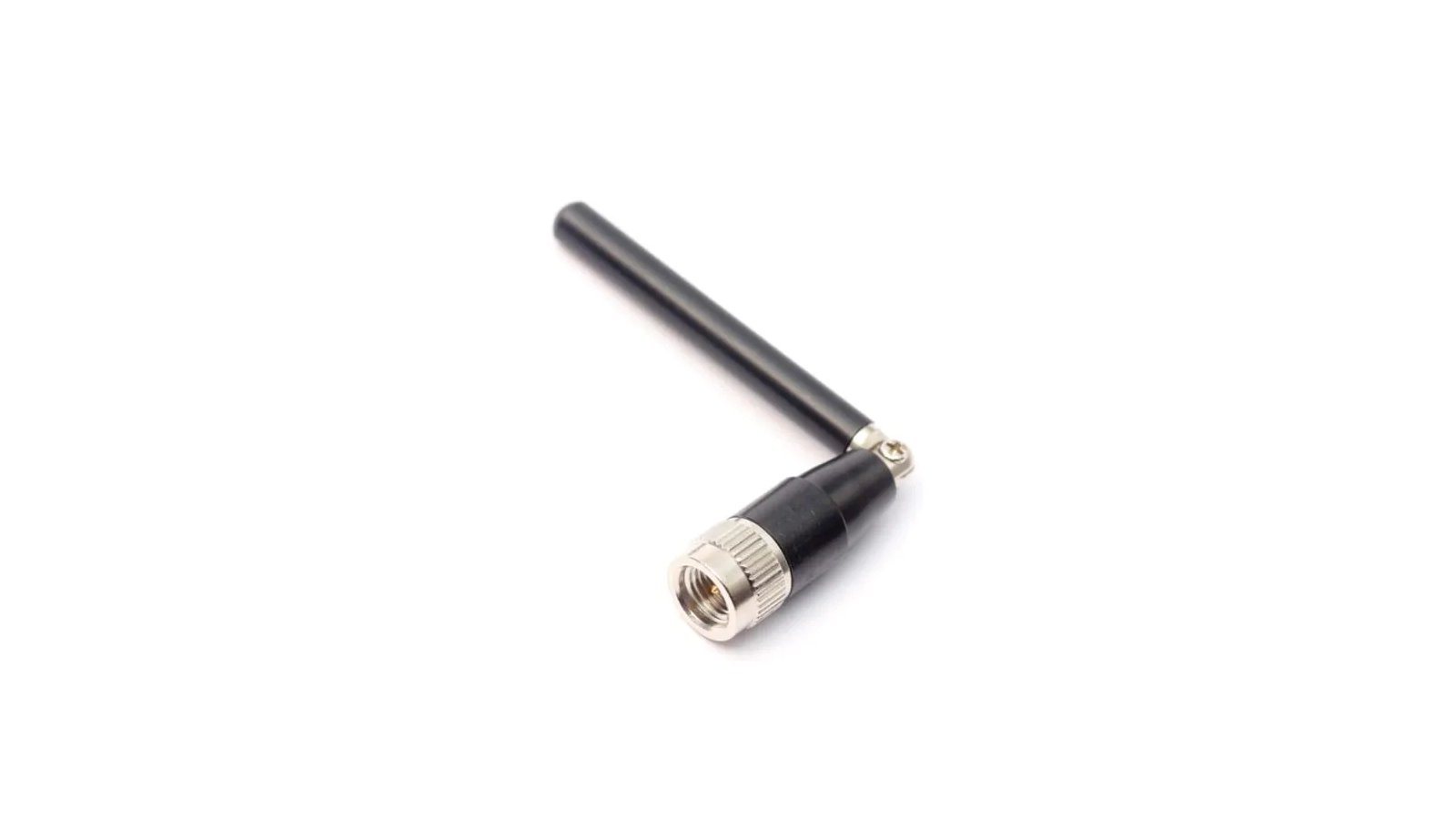
From the Crowd Supply Basics project.
Use one antenna for each of LimeSDR's four channels. Connect each antenna to the LimeSDR using a U.FL-to-SMA cable.
A TG.09 4G/3G/2G cellular hinged SMA(M) mount monopole antenna.
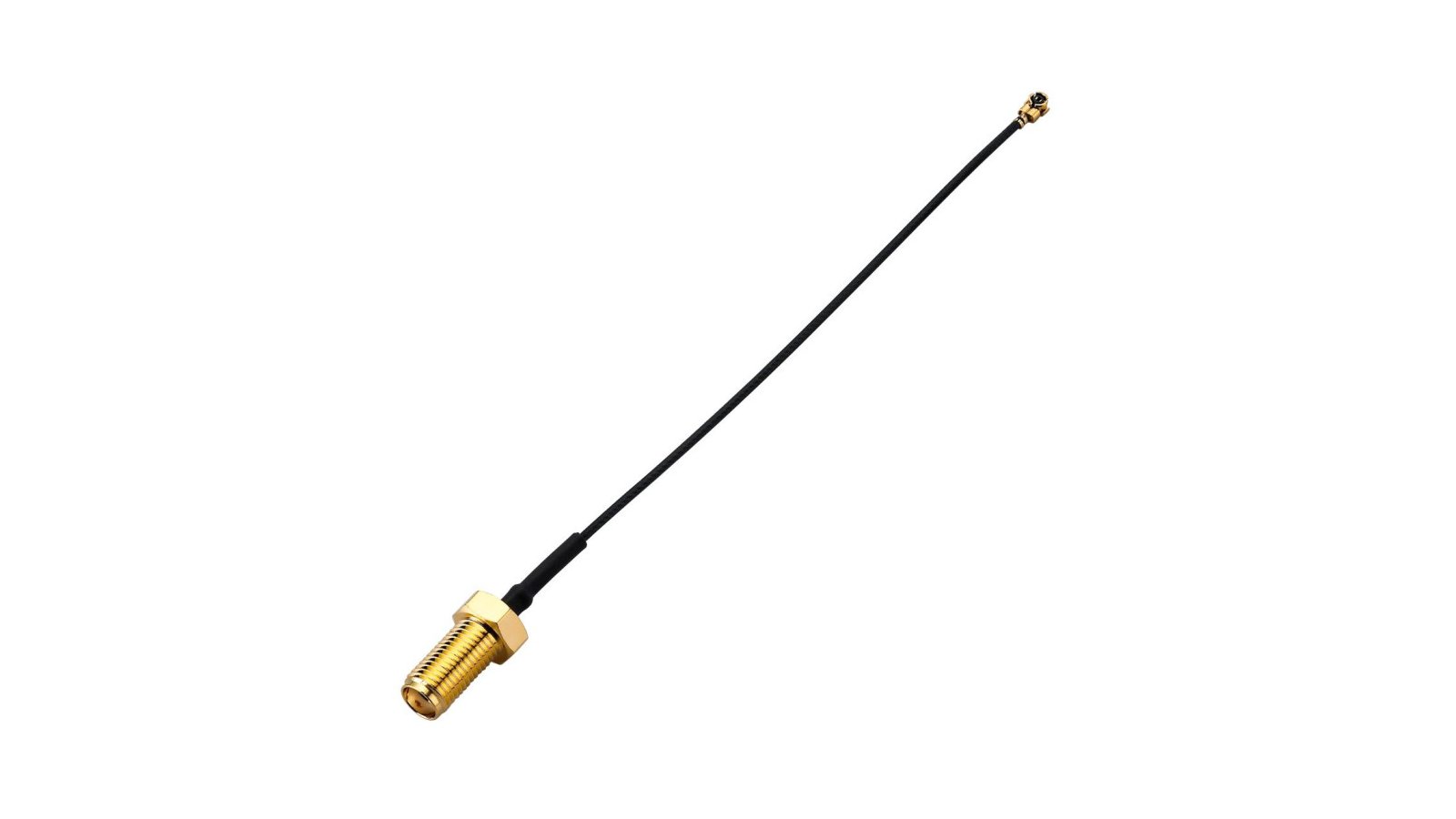
From the Crowd Supply Basics project.
Use one cable for each of LimeSDR's four channels. The 100 mm version works well with the Acrylic Case.
A Hirose U.FL to SMA (jack) bulkhead straight connector with a 1.32 mm diameter cable. Less than -2 dB cable insertion loss up to 6 GHz. Both connectors are gold-plated brass and the cable conductor is silver-coated copper.
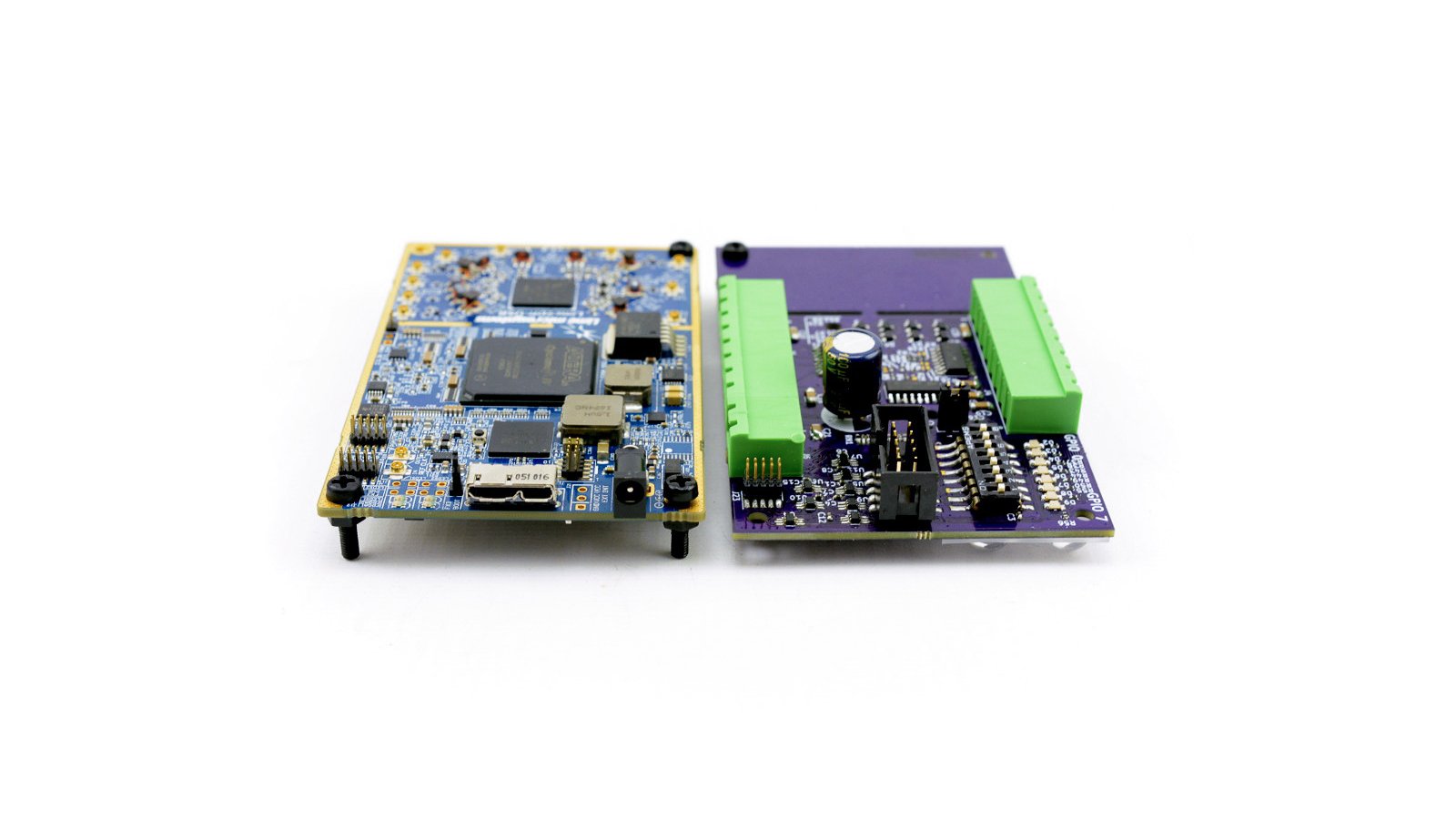
This stackable expansion board for the LimeSDR provides individually settable, bi-directional level-shifted I/O for FPGA GPIO 0-7. Each I/O has a high-voltage and power Darlington drive stage suitable for inductive loads, such as coaxial relays. LimeSDR not included.
· limemicro.com · myriadrf · LimeMicro · limemicro
Working toward the democratization of wireless communication through an open source ideology.
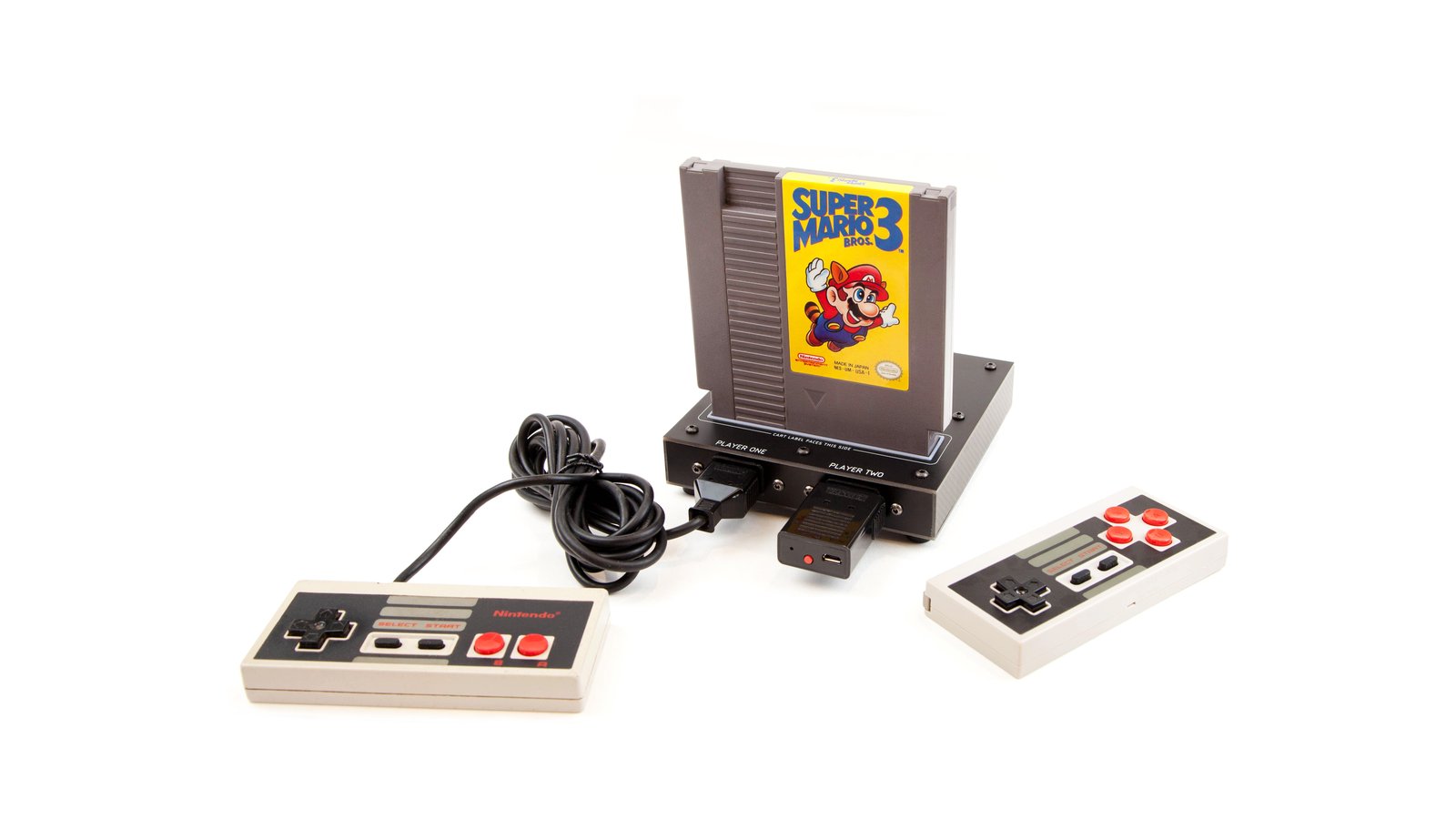
Classic NES games on open source hardware that fits in the palm of your hand
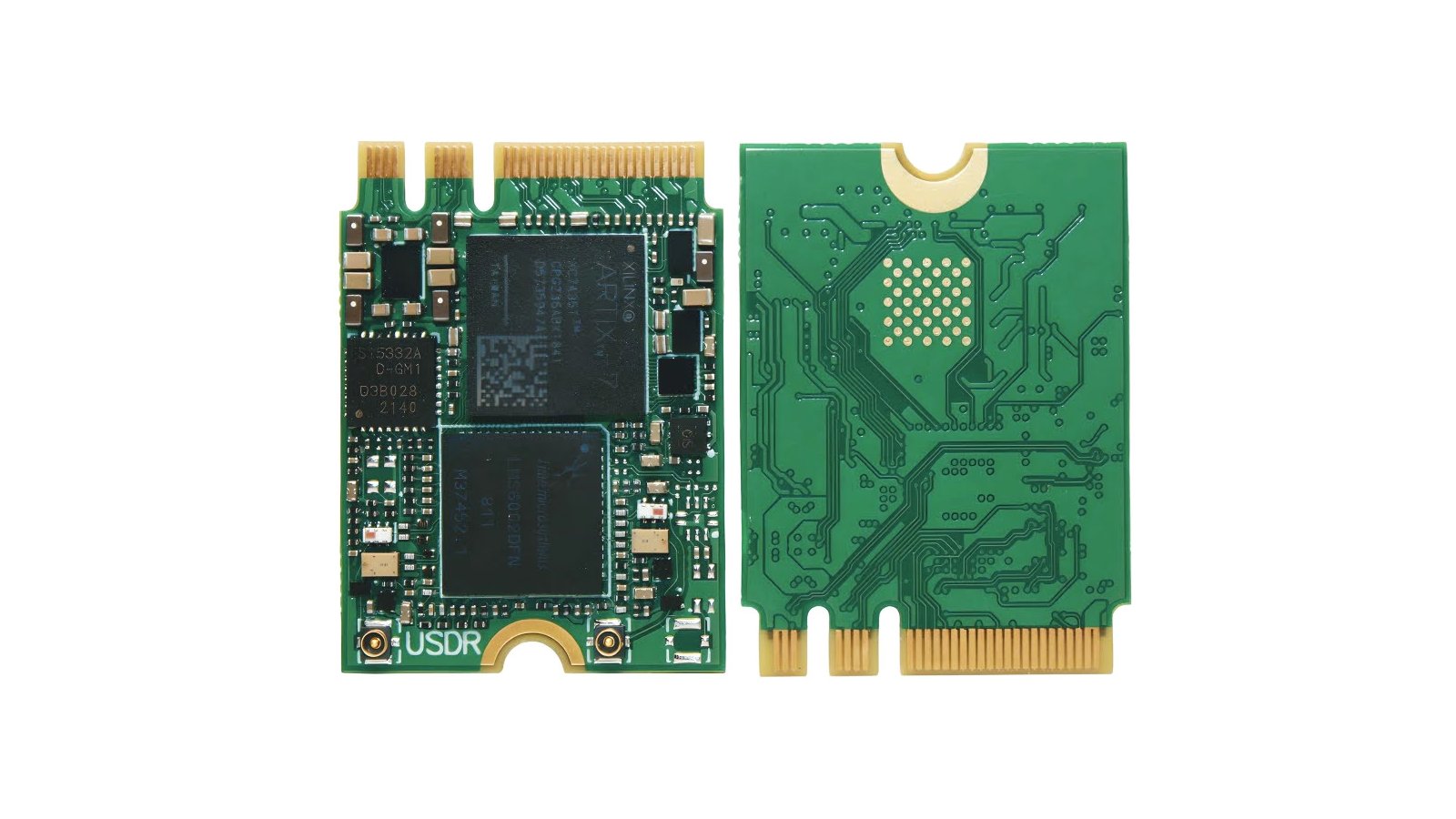
A tiny, single-sided M.2 SDR board that you can operate easily using your web browser
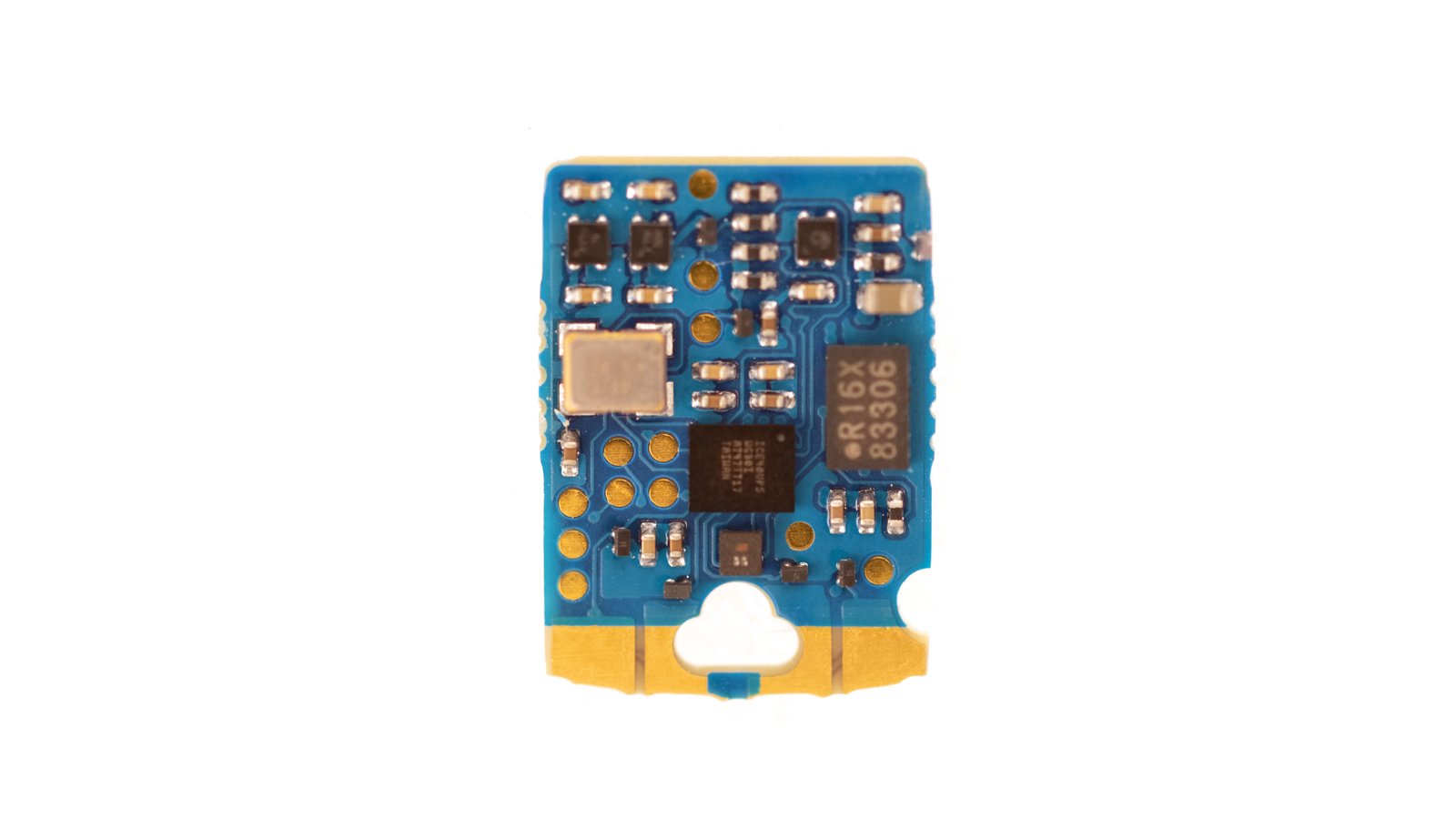
An FPGA board that fits inside your USB port